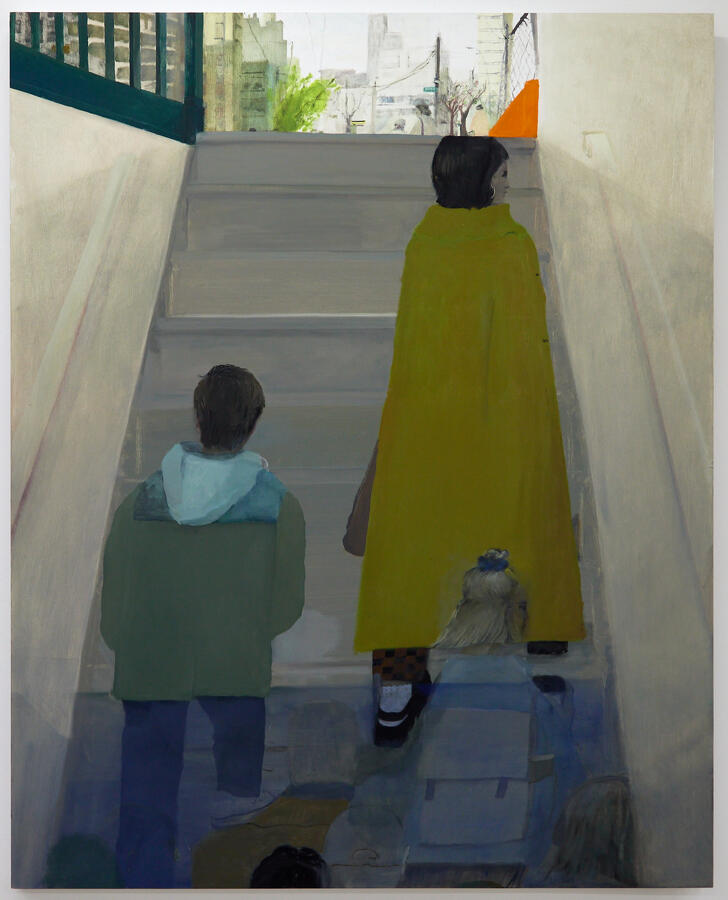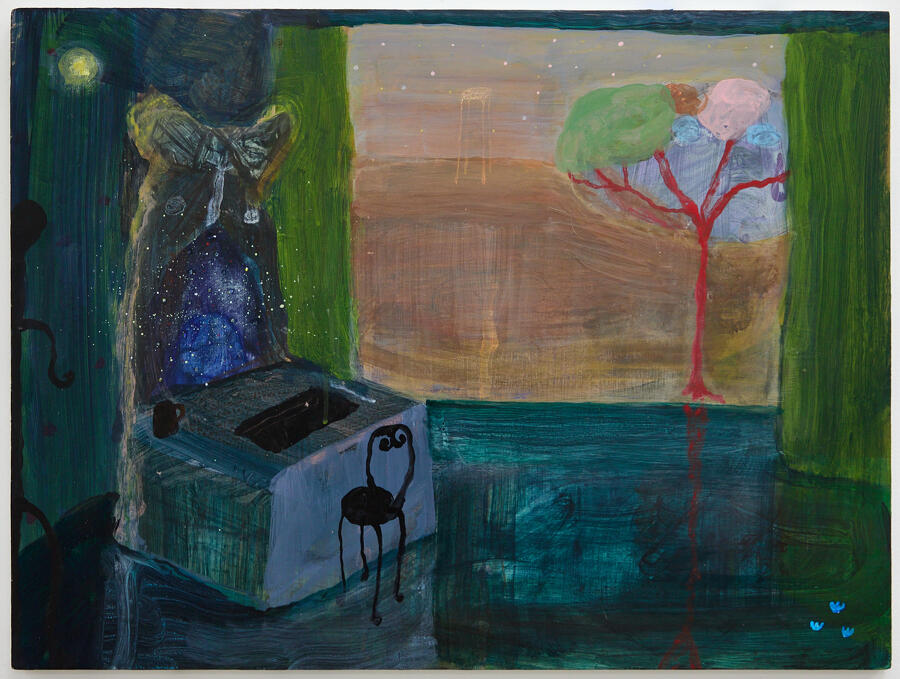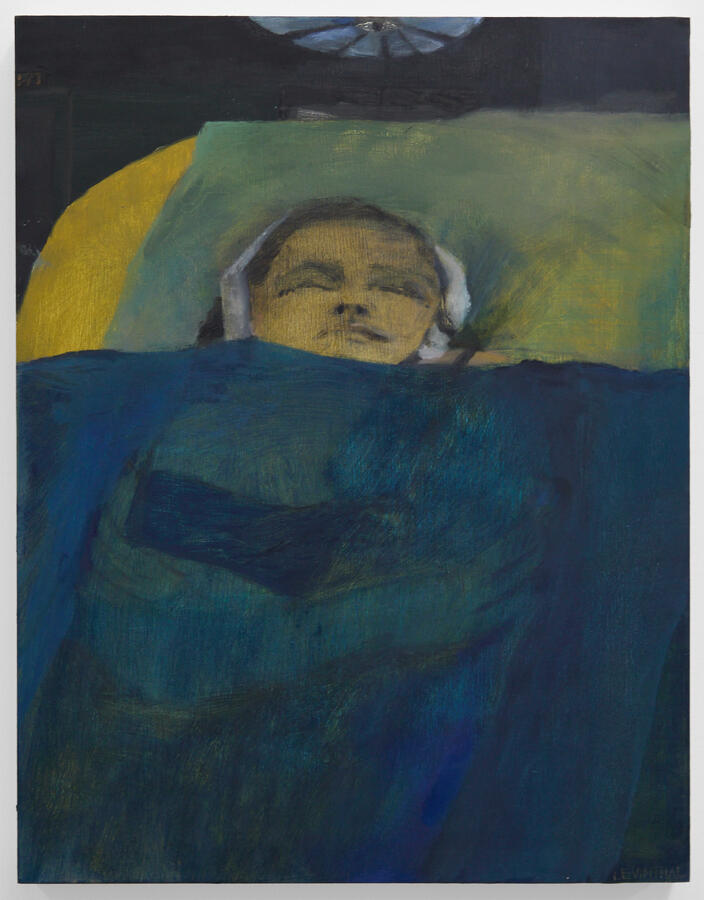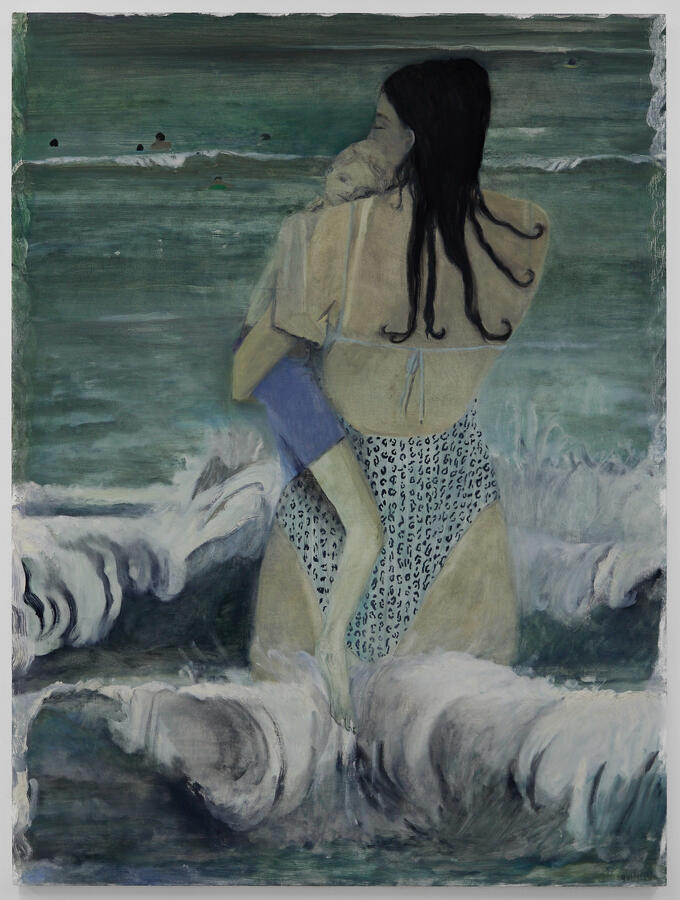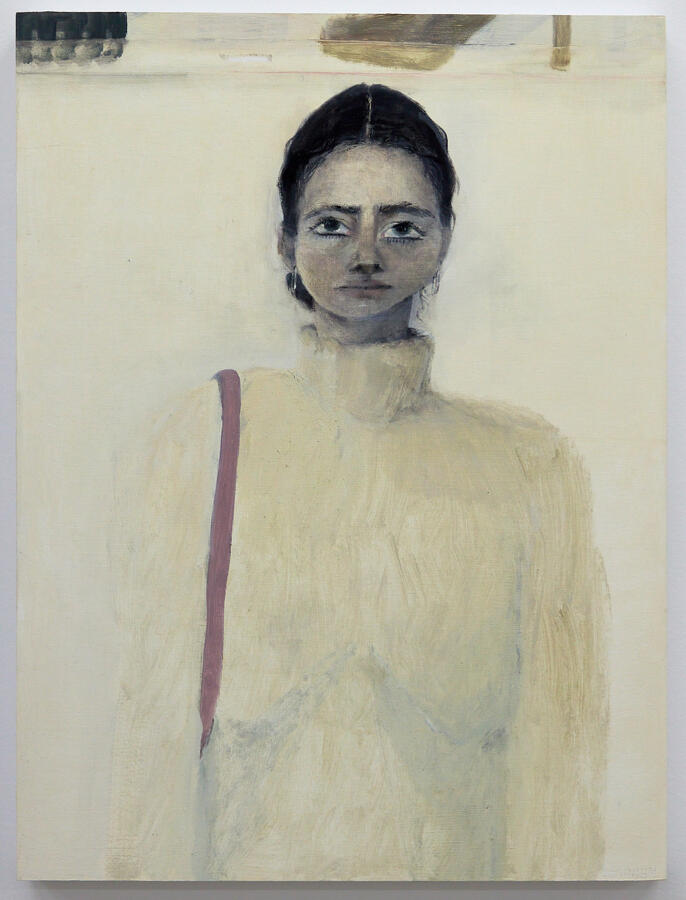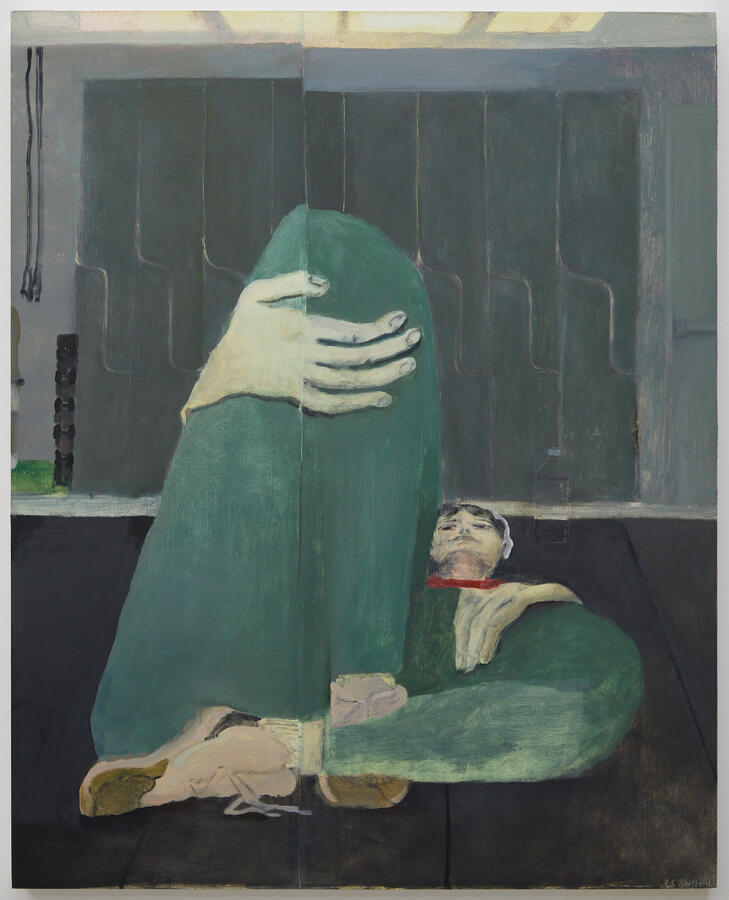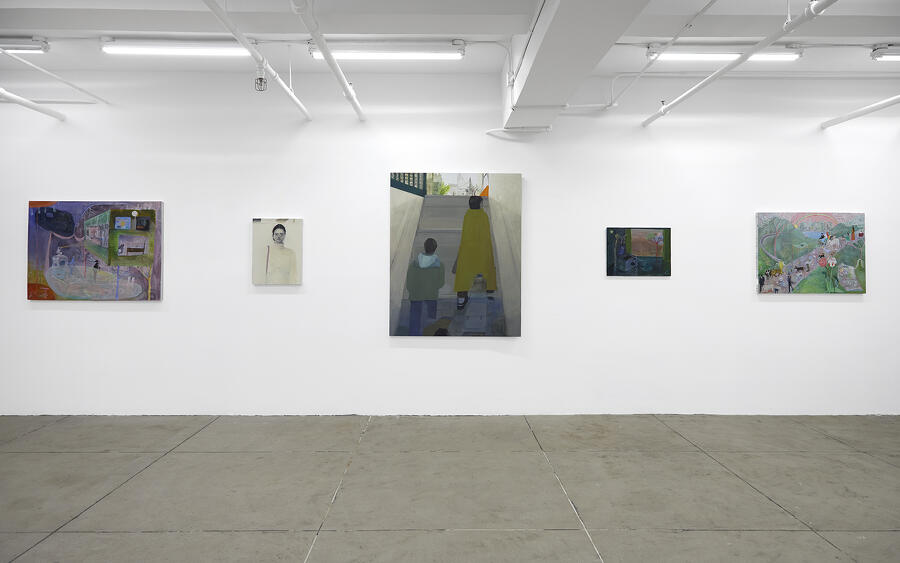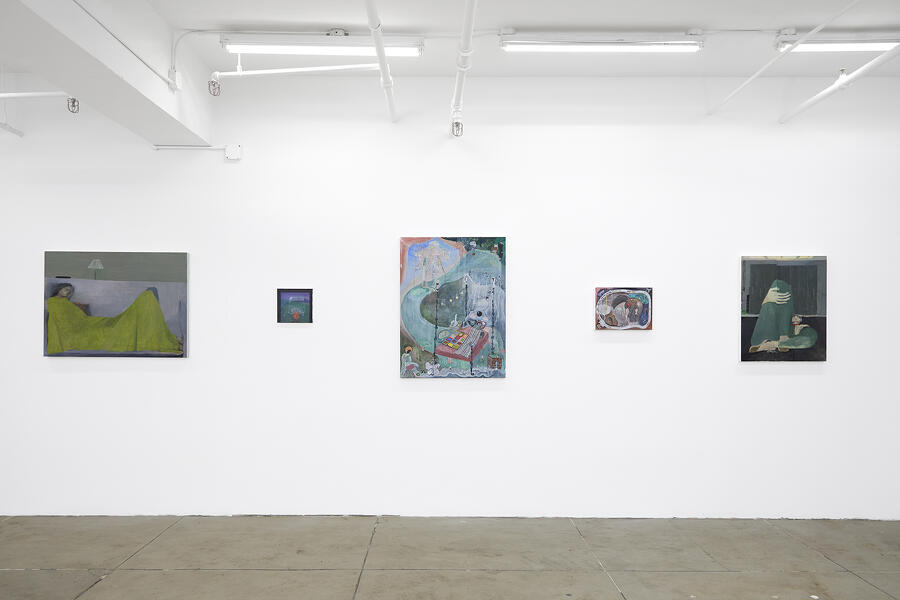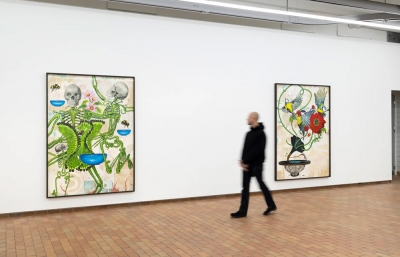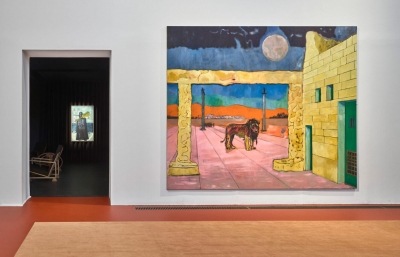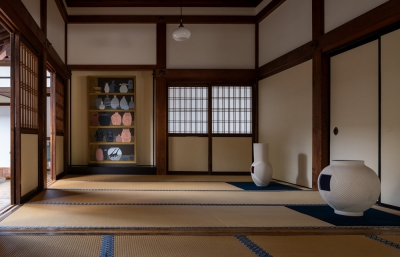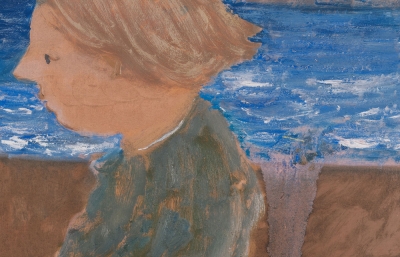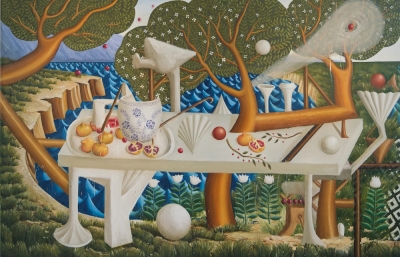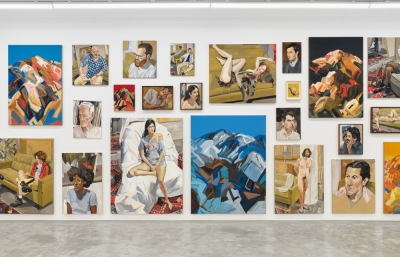Monya Rowe Gallery is pleased to announce a two-person exhibition of new paintings by Lacey Black and Aubrey Levinthal titled Daily Nights. The title of the exhibition is borrowed from an Emily Dickinson poem that explores the desire to preserve the “perfect dream”, a metaphor for embracing the element of surprise and uncertainty. The poem explores the connection between the perceived and actual: inner and outer, content and uncomfortable. Although working in very different ways, Lacey Black and Aubrey Levinthal, are both concerned with exploring the passing of time and changing realities. Largely autobiographical, and emotionally layered, the works in this exhibition explore the fact of existence.
Lacey Black’s paintings incorporate personal, fictitious and historical imagery. The paintings are rooted in figuration, yet dance with lyricism, abstraction and surrealism. Black likens the paintings to “vessels” which hold images, colors, textures, ideas, and experiences.* The work is deliberately unexplainable at times, almost otherworldly. Although the works can appear fantastical, they are very much shaped by lived experiences. Some of the characters in the playful procession depicted in Parade of Incarnations (2024) include family members, a drag queen from RuPaul’s Drag Race alongside the Hindu guru Neem Karoli Baba, Abraham Lincoln, and an assortment of animals straight out of an Edward Hicks (1780-1849) painting coexisting in a landscape reminiscent of Florine Stettheimer (1871-1944). However, there are also moments that cannot be named, where the orientation falls apart and there is a destabilizing moment, such as unexplainable shapes. As Black says: “Like a kind of fog that came over things. The moment when colors and shapes become something else for a moment, before thinking. Where we kind of look without knowing, and then our mind comes in and pieces things together to become a car, or a television”. Black’s paintings connect personal moments with the external world, where humans, animals and nature all coexist.
Much like Black, Aubrey Levinthal’s paintings are also concerned with a shifting reality. For this exhibition, Levinthal places an emphasis on how the division of space impacts experience. Levinthal depicts transitory encounters such as a crowd exiting a subway station, a mother and child enduring a rising wave, and a woman gazing longingly up at a shoe store. Shared environments are fraught with nuanced tension and personal connection. Using vertical space to isolate figures in quotidian public settings brings attention to their interior life and connection to the outside world. “Watching others, and watching ourselves through others”, Levinthal says. In Weighted Blanket (2024) and Blue Sheet (2024), Levinthal engages with the mummified shape often seen in Ancient Egyptian art history. Here, symbolizing not only spirituality, but also self-reflection, and self-care. Levinthal truncates objects by using flat blocks of color to render them into mere shapes. A green blanket engulfing a sleeping woman on a sofa echoes Pierre Bonnard’s (1867-1947) interiors. In Shoe Store Lady (2024), the protagonists sweater is the same color as the background, highlighting the formal quality of the pink line representing a purse strap. Levinthal’s paintings capture moments of vulnerability in a fast-paced world.




